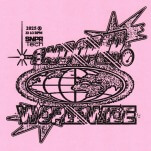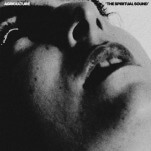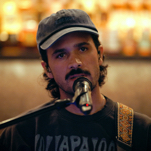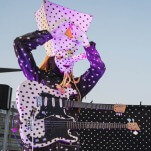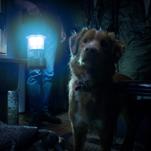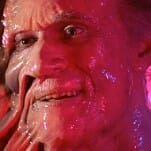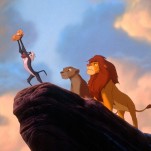The 20 Best Sci-Fi Movies on HBO Max Right Now (September 2025)
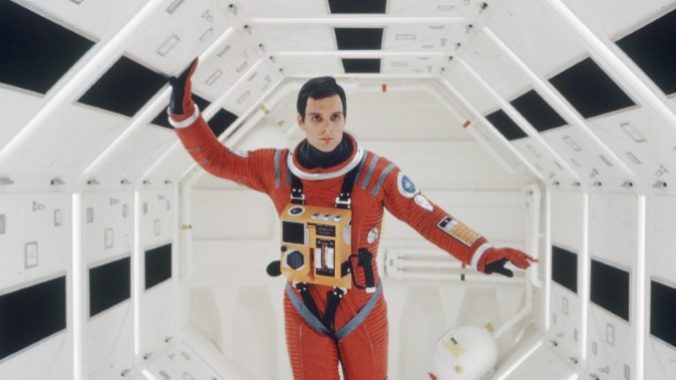
The first thing one notices, looking at the sci-fi movie genre as it exists on HBO Max, is that there’s an unusual level of genuine curation involved here. The overall scope of the service might not be quite as broad as something like Netflix, but you’re likely to have heard of far more of these films. That’s because unlike the catalog of Netflix, Hulu or (especially) Amazon Prime, the bulk of the selections here aren’t made up of modern, straight-to-VOD, zero-budget productions with vague, one-word titles. Rather, almost everything here received a wide release at some point.
That makes for an interesting sci-fi library indeed, one that balances total schlock with acclaimed works by the likes of Steven Spielberg, Ridley Scott and Stanley Kubrick. There are alien classics here, and sentient robots, and plenty of action and horror crossovers as well.
In fact, of all the major streamers, HBO Max likely has the library most focused on what you’d call older “classics,” rather than newer releases—fine with us, considering that segment tends to be less well represented. With that said, it would be nice if they made “sci-fi” a separate category in their UI at some point, rather than “sci-fi and fantasy.”
You may also want to consult the following, sci-fi centric lists:
The 100 best sci-fi movies of all time
The 100 best sci-fi TV shows of all time
The best sci-fi movies on Netflix
The best sci-fi movies on Amazon Prime
1. 2001: A Space Odyssey
Year: 1968
Director: Stanley Kubrick
Stars: Keir Dullea, Gary Lockwood, Douglas Rain, William Sylvester
Rating: G
Fifty years ago, Stanley Kubrick told the story of everything—of life, of the universe, of pain and loss and the way reality and time changes as we, these insignificant voyagers, sail through it all, attempting to change it all, unsure if we’ve changed anything. Written by Kubrick and Arthur C. Clarke (whose novel, conceived alongside the screenplay, saw release not long after the film’s premiere), 2001: A Space Odyssey begins with the origins of the human race and ends with the dawn of whatever comes after us—spinning above our planet, god-like, a seemingly all-knowing, hopefully benevolent fifth-dimensional space fetus—spanning countless light years and millennia between. And yet, despite its ambitious leaps and barely comprehensible scope, every lofty symbolic gesture Kubrick matches with a moment of intimate humanity: the sadness of a mighty intellect’s death; the shock of cold-blooded murder; the minutiae and boredom of keeping our bodies functioning on a daily basis; the struggle and awe of encountering something we can’t explain; the unspoken need to survive, never questioned because it will never be answered. So much more than a speculative document about the human race colonizing the Solar System, 2001 asks why we do what we do—why, against so many oppositional forces, seen and otherwise, do we push outward, past the fringes of all that we know, all that we ever need to know? Amidst long shots of bodies sifting through space, of vessels and cosmonauts floating silently through the unknown, Kubrick finds grace—aided, of course, by an epic classical soundtrack we today can’t extricate from Kubrick’s indelible images—and in grace he finds purpose: If we can transcend our terrestrial roots with curiosity and fearlessness, then we should. Because we can. That the end of Kubrick’s odyssey returns us to the beginning only reaffirms that purpose: We are, and have always been, the navigators of our destiny. —Dom Sinacola
2. Stalker
Year: 1979
Director: Andrei Tarkovsky
Stars: Marcello Mastroianni, Claudia Cardinale, Anouk Aimee
Rating: NR
“Once, the future was only a continuation of the present. All its changes loomed somewhere beyond the horizon. But now the future’s a part of the present.” So says the Writer (Anatoli Solonitsyn) in Andrei Tarkovsky’s Stalker, somewhere deep in the Zone, contemplating the deeper trenches of his subconscious, of his fears and life and whatever “filth” exists within him. “Are they prepared for this?” he asks. In Tarkovsky’s last Soviet film, the director seems to be admitting that what he’s feared most has come to pass. What that means is of course nebulous for a viewer not steeped in the director’s life or in the history of the country that was both home and hostile to him and his work throughout most of his life. Based very loosely on Roadside Picnic, a novel by brothers Boris and Arkady Strugatsky (who also wrote the screenplay), Stalker imagines a dystopic future not far from our present—or Tarkovsky’s present, before the fall of the Berlin Wall or the devastation of Chernobyl—in which some sort of otherworldly force has deposited a place humans have called “the Zone” onto Earth. There, the laws of Nature don’t apply, time and space thwarted by the hidden desires and wills of all those who enter it. Of course, the government has set up cordons around the Zone, and entry is strictly prohibited. Guides/liaisons called “stalkers” head illegal expeditions into the Zone, taking clients (often intellectual elites who can afford the trip) into the heart of the restricted, alien area—in search of, as we learn as the film slowly moves on, the so-called “Room,” where a person’s deepest desires become reality. One such Stalker (Aleksandr Kaidanovsky) is hired by the aforementioned Writer and a physicist (or something) known only as the Professor (Nikolai Grinko) to lead them into the Zone, spurred by vague ideas of what they’ll find when they reach the Room. The audience is as much in the dark, and through Tarkovsky’s (near-intolerably) patient shots, the three men come to discover, as do those watching their journey, what has really brought them to such an awful extreme as hiring a spiritual criminal to guide them into the almost certain doom of whatever the Zone has waiting for them. And yet, no context properly prepares a viewer for the harrowing, hypnotic experience of watching Stalker. Between the sepia wasteland outside the Zone (so detailed in its grime and suspended misery you may need to take a shower afterwards) and the oversaturated greens and blues of the wreckage inside, Tarkovsky moves almost imperceptibly, taking the rhythms of industry and the empty lulls of post-industrial life to the point of making the barely mystical overwhelmingly manifest. Throughout that push and pull, there is the mounting sense of escape—of Tarkovsky escaping the Soviet Union and its restrictions on his films, maybe—as equally as there is the sense that escape should never be attempted. Because some freedom, some knowledge, isn’t meant for us. —Dom Sinacola
3. Godzilla
Year: 1954
Director: Ishir? Honda
Stars: Sachio Sakai, Takashi Shimura, Momoko Kochi, Akira Takarada
Rating: NR
Early in Godzilla, before the monster is even glimpsed off the shore of the island of Odo, a local fisherman tells visiting reporter Hagiwara (Sachio Sakai) about the play they’re watching, describing it as the last remaining vestige of the ancient “exorcism” his people once practiced. Hagiwara watches the actors “sacrifice” a young girl to the calamitous sea creature to satiate its hunger and cajole it into leaving some fish for the people to enjoy—at least until the next sacrifice. Ishiro Hondo’s smash hit monster movie—the first of its kind in Japan, the most expensive movie ever made in the country at the time, not even a decade after the atomic bombing of Hiroshima and Nagasaki—is, after 20-something sequels over three times as many years, a surprisingly elegiac exorcism of its own, a reminder of one nation’s continuing trauma during a time when the rest of the world jonesed to forget.
As J Hoberman describes in his essay for the film’s Criterion release, much of Honda’s disaster imagery is “coded in naturalism,” a verite-like glimpse of the harrowing destruction wrought by the beast but indistinguishable from the aftermath of the Americans’ attacks in 1945, especially when the U.S. and Russia, among other powers, were testing H-bombs in the Pacific in the early 1950s, bathing the Japanese in even more radiation than that in which they’d already been saturated. And yet, Godzilla is a sci-fi flick, replete with a “mad” scientist in an eye patch and a human in a rubber dinosaur suit flipping over model bridges. That Honda handles such goofiness with an unrelentingly poetic hand, purging his nation’s psychological grief in broadly intimate volleys, is nothing short of astounding. Shots of Godzilla trudging through thick smoke, spotlights highlighting his gaping maw as the Japanese military’s weapons do nothing but shock the dark with beautiful chiaroscuro, have been rarely matched in films of its ilk (and in the director’s own legion of sequels); Honda saw gods and monsters and, with the world entering a new age of technological doom, found no difference between the two. —Dom Sinacola
4. Solyaris
Year: 1972
Director: Andrei Tarkovsky
Stars: Donatas Banionis, Natalya Bondarchuk, Jüri Järvet
Rating: PG
In 2002, Steven Soderbergh adapted Stanislaw Lem’s classic science fiction novel into a perfectly fine and handsome movie. It’s the one time that the story of a Tarkovsky film has been duplicated, sharing source material, and it illustrates an important truth: Andrei Tarkovsky’s vision is singular, inimitable; it towers over all others. Where an accomplished director like Soderbergh made a serviceable sci-fi flick, Tarkovsky made visual poetry of the highest order. Tarkovsky’s artistic instincts rarely failed him, and even though it was a big budget genre picture, Solyaris takes risks with the same confidence of expression and the same depth of resonance as any other Tarkovsky film. The science fiction concept of the titular planet-entity allows Tarkovsky a new angle at the same themes pondered in many of his works: the pivotal roles of history and memory in our present and future; the fraught responsibility of the individual in responding to the calls of the sublime; the struggle to know truth. Tarkovsky’s long-take, free-associative aesthetic was predicated on his philosophy of filmmaking as “sculpting in time,” and in Solyaris there is a fascinating confluence between the way time and perception is manipulated by Tarkovsky, and the way those things are manipulated by Solyaris itself. Solyaris gives back the protagonist, astronaut psychologist Kris Kelvin (Donatas Banionis), his dead wife Hari (Natalya Bondarchuk), for what purpose is unclear. But Tarkovsky’s films work in a similar fashion; difficult to say exactly why they do what they do, yet they pull at the deepest roots of ourselves. They elicit emotional, meditative realities unlike any other. Like Kelvin’s resurrected Hari, the stimuli are simulacrums, symbols mined from a collective dream, but this does not diminish the worth of experiencing them. Sometimes they lead you to a place like Solyaris leads Kelvin: an island of lost memory—or perhaps of an impossible future, awash in the waters of some Spirit. That makes the unreal real; that gives the dream life. —Chad Betz
5. Nausicaä of the Valley of the Wind
Year: 1984
Director: Hayao Miyazaki
Stars: Alison Lohman, Patrick Stewart, Shia LaBeouf, Uma Thurman, Chris Sarandon, Edward James Olmos
Rating: PG
Nausicaä of the Valley of the Wind is, quite simply, the film responsible for the creation of Studio Ghibli. It not only signaled Miyazaki’s nascent status as one of anime’s preeminent creators, but also sparked the birth of an animation studio whose creative output would dominate the medium for decades to come. Following the release of The Castle of Cagliostro, Miyazaki’s odd Lupin III adventure, the director was commissioned by his producer and future long-time collaborator Toshio Suzuki to create a manga in order to better pitch a potential film to his employers at Animage. What resulted was Nausicaä, a fantasy-sci-fi epic inspired by the works of Ursula K. Le Guin and Jean “Moebius” Giraud, starring a courageous warrior princess trying to mend a rift between humans and the forces of nature while soaring across a post-apocalyptic wilderness.
Nausicaä was the film that introduced the world to the motifs and themes for which Miyazaki would become universally known: a courageous female protagonist unconscious of and undeterred by gender norms, the surmounting power of compassion, environmental advocacy and an unwavering love and fascination with the phenomenon of flight. It spawned an entire generation of animators, among them Hideaki Anno, whose lauded work on the film’s climactic finale would later inspire him to go on to create Neon Genesis Evangelion. The essentialness of Nausicaä of the Valley of the Wind’s placement within the greater canon of animated film, Japanese or otherwise, cannot be overstated. —Toussaint Egan
6. The Terminator
Year: 1984
Director: James Cameron
Stars: Arnold Schwarzenegger, Linda Hamilton, Michael Biehn, Paul Winfield, Lance Henriksen
Rating: R
James Cameron’s first Terminator (and second feature) is less of a pure-popcorn action flick than its upscaled sequel, but that makes it all the more terrifying of a movie—dark, somber, replete with a silent villain who calmly plucks bits of his damaged face off to more precisely target its victims. The task in front of Kyle Reese (Michael Biehn) and Sarah Connor (Linda Hamilton) seems so insurmountable—even with a soldier from the future, going after the T-800 (Arnold Schwarzenegger, duh) with modern weapons is so ineffectual, it’s nearly comical. It’s as if Schwarzenegger is playing entropy itself—entropy seemingly a theme of The Terminator series, given the time-hopping do-overs, reboots and retreads since. You can destroy a terminator, but the future (apparently driven by box office receipts) refuses to be changed. —Jim Vorel
7. Inception
Year: 2010
Director: Christopher Nolan
Stars: Leonardo DiCaprio, Michael Caine, Ken Watanabe, Joseph Gordon-Levitt, Marion Cotillard, Elliot Page, Tom Hardy, Dileep Rao, Cillian Murphy, Tom Berenger
Rating: PG-13
In the history of cinema, there is no twist more groan-inducing than the “it was all a dream” trope (notable exceptions like The Wizard of Oz aside). With Inception, director Christopher Nolan crafts a bracing and high-octane piece of sci-fi drama wherein that conceit isn’t just a plot device, but the totality of the story. The measured and ever-steady pace and precision with which the plot and visuals unfold, and Nolan mainstay wally Pfister’s gorgeous, globe-spanning on-location cinematography, implies a near-obsessive attention to detail. The film winds up and plays out like a clockwork beast, each additional bit of minutia coalescing to form a towering whole. Nolan’s filmmaking and Inception’s dream-delving work toward the same end: to offer us a simulation that toys with our notions of reality. As that, and as a piece of summer popcorn-flick fare, Inception succeeds quite admirably, leaving behind imagery and memories that tug and twist our perceptions—daring us to ask whether we’ve wrapped our heads around it, or we’re only half-remembering a waking dream. Director Andrei Tarkovsky wrote a book about his philosophy towards filmmaking, calling it Sculpting in Time; Nolan, on the other hand, doesn’t sculpt, he deconstructs. He uses filmmaking to tear time apart so he can put it back together as he wills. A spiritual person, Tarkovsky’s films were an expression of poetic transcendence. For Nolan, a rationalist, he wants to cheat time, cheat death. His films often avoid dealing with death head-on, though they certainly depict it. What Nolan is able to convey in a more potent fashion is the weight of time and how ephemeral and weak our grasp on existence. Time is constantly running out in Nolan’s films; a ticking clock is a recurring motif for him, one that long-time collaborator Hans Zimmer aurally literalized in the scores for Interstellar and Dunkirk. Nolan revolts against temporal reality, and film is his weapon, his tool, the paradox stairs or mirror-upon-mirror of Inception. He devises and engineers filmic structures that emphasize time’s crunch while also providing a means of escape. In Inception different layers exist within the dream world, and the deeper one goes into the subconscious the more stretched out one’s mental experience of time. If one could just go deep enough, they could live a virtual eternity in their mind’s own bottomless pit. “To sleep perchance to dream”: the closest Nolan has ever gotten to touching an afterlife. —Michael Saba and Chad Betz
8. Spaceballs
Year: 1987
Director: Mel Brooks
Stars: Mel Brooks, John Candy, Rick Moranis, Bill Pullman, Daphne Zuniga, Dick Van Patten, George Wyner, Joan Rivers
Rating: PG
Originally perceived as one of writer/director Mel Brooks’ lesser works, this loving send-up of the sci-fi/fantasy genre (specifically, Star Wars) has, over the years, wormed its way into the hearts of a new generation of fans catching it for the first time at home. “May the Schwartz be with you,” “Ludicrous Speed,” “Mawg”—if these are all terms that mean nothing to you then it’s high-time you checked this movie out and see what all the fuss is about. —Mark Rozeman
9. Invasion of the Body Snatchers
Year: 1978
Director: Philip Kaufman
Stars: Donald Sutherland, Brooke Adams, Leonard Nimoy, Jeff Goldblum, Veronica Cartwright
Rating: PG
There’s no real need for the film’s credit-limned intro—a nature-documentary-like sequence in which the alien spores soon to take over all of Earth float through the cosmos and down to our stupid third berg from the Sun—because from the moment we meet health inspector Matthew Bennell (Donald Sutherland) and the colleague with whom he’s hopelessly smitten, Elizabeth Driscoll (Brooke Adams), the world through which they wander seems suspiciously off. Although Philip Kaufman’s remake of Don Siegel’s 1956 Invasion of the Body Snatchers begins as a romantic comedy of sorts, pinging dry-witted lines between flirty San Franciscan urbanites as Danny Zeitlin’s score strangely lilts louder and louder overhead, Kaufman laces each frame with malice. Oddly acting extras populate the backgrounds of tracking shots and garbage trucks filled with weird dust fluff (which we eventually learn spreads the spores) exist at the fringes of the screen. The audience, of course, puts the pieces together long before the characters do—characters who include Jeff Goldblum at his beanpole-iest and Leonard Nimoy at his least Spock-iest—but that’s the point: As our protagonists slowly discover that the world they know is no longer anything they understand, so does such simmering anxiety fill and then usurp the film. Kaufman piles on more and more revolting, unnerving imagery until he offers up a final shot so bleak that he might as well be punctuating his film, and his vision of modern life, with a final, inevitable plunge into the mouth of Hell. —Dom Sinacola
10. Belle
Year: 2022
Director: Mamoru Hasoda
Stars: Kaho Nakamura, Ryo Narita, Shota Sometani, Tina Tamashiro, Lilas Ikuta
Rating: PG
Belle explodes onto the screen with a bombastic concert in a virtual world. Known simply as U, it’s the ultimate virtual community where users can become entirely different from their dull real-life counterparts. Among them is one singer that has captured the love and adoration of billions. As the starlet Belle begins belting out her opening number, center stage on the back of a giant whale, it’s easy to be swept into this vibrant world. Thankfully, Belle has enough substance to back up this spectacle. The crux of writer/director Mamoru Hosoda’s latest film is a reimagined Beauty and the Beast mixed with teenage adversity in a digital wonderland. It’s a potpourri of hormones, misunderstandings and animation styles that recall his 2009 breakthrough Summer Wars. Belle even relies on the family dynamics seen in some of his later movies—like the lone outcast Ren in 2015’s The Boy and the Beast or the wolf siblings in 2012’s Wolf Children. Hosoda’s children have always had to endure great tragedies. It’s within this combination of family struggles and virtual reality that Belle finds its groove. Suzu (Kaho Nakamura) is a 17-year-old high school student who lives in the countryside with her father (Koji Yakusho). Although a few years have passed since the death of her mother, Suzu is still traumatized. She’s shut out the world around her, her despair sapping her of her joy and love of singing. Her relationship with her father is nonexistent, and she’s a certifiable pariah at school. Suzu takes the plunge and joins the world of U. This new world—free of the pressures of reality—allows Suzu to pursue singing once again. That’s until trouble arises in the form of a violent avatar known as “The Dragon.” Belle’s most spellbinding sequences come from inside the virtual world of U. Colorful 3D figures float through a kaleidoscope of colors and towering structures. The biggest setpieces in the movie take place here: An epic concert for billions of eager spectators, a battle through a castle—these are only a few of the memorable sights and sounds of U. To get an idea of what it sounds like, Nakamura’s contributions are like a mixture of rap and pop that becomes an instant earworm like on the opening title, “U.” The song brings in a wild rhythm while Nakamura races to keep up with the beat. It’s the perfect introduction to this futuristic virtual world. Other songs, like the ballad “Lend Me Your Voice” and the soaring anthem “A Million Miles Away,”Beauty and the Beast, it’s also a moving story about overcoming grief and seeking help when everything seems lost. Though it tackles a little too much, Belle is a triumph.—Max Covill
11. Furiosa: A Mad Max Saga
Year: 2024
Director: George Miller
Stars: Anya Taylor-Joy, Chris Hemsworth, Tom Burke, Alyla Browne
Rating: R
If you ever took a class on the Greek classics, you might remember that the epics of Homer are defined by their first words. The Odyssey is the story of a “man,” while the Iliad is a story of “μῆνις,” which is often translated as wrath, rage…or fury. The epics of George Miller barely need words at all, yet Furiosa: A Mad Max Saga is the Iliad to Fury Road’s stripped-down Odyssey. The latter’s elegant straight-line structure is replaced with lush chapters, documenting the interconnected systems of post-apocalyptic nation-gangs through the years. Through it all, a Dickensian hero clings to this world’s seedy undercarriage. Reducing Furiosa down to a single word does it as little justice as it does the sagas it scraps, welds and reuses like its countless Frankenstein vehicles. But understanding George Miller’s Fury Road prequel as the story of war—of sprawling futility, driven by the same cyclical cruelty that turned its deserts into Wastelands—makes it far more than a satisfying origin story. (Though, it’s that too). Furiosa speaks the language of epics fluently, raging against timeless human failure while carrying a seed of hope. What we learn, we learn through the eyes of Furiosa, from the moment she’s ripped from the Green Place of Many Mothers as a child, to the second before she tears out of Immortan Joe’s Citadel, smuggling Fury Road’s stowaways. As Furiosa grows from traumatized child (Alyla Browne) to damaged adult (Anya Taylor-Joy), she survives the slave-labor bowels of the Citadel, claws her way into a position aboard a trade caravan and waits for the perfect moment to enact revenge upon her initial captor, the chaotic, power-hungry biker warlord Dementus (Chris Hemsworth). Pushing back on the various men who hunt them, Browne and Taylor-Joy’s performances work in stunning tandem, steadily heating the steely young girl’s resolve until it turns molten. When you match the most powerful eyes in the business with Miller’s evocative framing (Furiosa is shot a bit like Galadriel’s brush with evil in Lord of the Rings—somewhere between avenging angel and Frank Miller cover), you get all the character you need. Each action scene, whether another amazing chase or a desperate rescue mission deep in enemy territory, is driven just as deeply by visual logic as by spectacle. These stunning visions of neo-medieval torture in Hell’s junkyard only work if we can make sense of it all. Furiosa is a film well-planned and deeply dreamed. Miller’s movies strip folkloric epics down to their basic mechanical parts, functional skeletons that run on raw emotion like the war machines running on piss and guzzolene.–Jacob Oller
12. Godzilla
Year: 2014
Director: Gareth Edwards
Stars: Aaron Taylor-Johnson, Bryan Cranston, Ken Watanabe, Elizabeth Olsen, Juliette Binoche, Sally Hawkins, David Strathairn
Rating: PG-13
The rebooted American Godzilla by Gareth Edwards struggles between two aspirations, to channel the gravitas and meaning of the 1954 original and also satisfy a popcorn-crunching audience of American action movie fans who just want to see some stuff get blowed up real good. At its best, it gives in to the pulpy ridiculousness of being a film about giant monsters, simply stepping back for a second to let the beautifully rendered creatures become the stars. At its worst, it bogs down in endless human drama that is devoid of meaning, following the wrong protagonists (why kill Bryan Cranston? Why?) as they struggle to rescue nameless children and the audience wonders why it should care. A number of awesome moments in the final 30 moments help propel this launch of Legendary’s MonsterVerse up the list, and the film particularly benefits from its sense of scale and awe toward Godzilla in particular, but just as often it frustrates by teasing the audience with expected confrontations that don’t actually happen. It’s a mixed bag, but one that has grown in our esteem in the years since it was first released. Of the modern American Godzilla films, it easily pays the most respect to Godzilla as a character and a force of nature. —Jim Vorel
13. Mickey 17
Year: 2025
Director: Bong Joon-ho
Stars: Robert Pattinson, Naomi Ackie, Steven Yeun, Toni Collette, Mark Ruffalo
Rating: R
If the first half of Mickey 17 serves as a pseudo-metaphysical exploration on the value of human life, then the second half is a skillfully edited, purely fun Hollywood sci-fi spectacle, with Joon-ho flexing his strong sense of craft for the entire runtime. When clone Mickey 17 is assumed dead, the scientists print out Mickey 18, without knowing that Mickey 17 has been saved by a population of large, toothy bug mammoths, creating an illegal double. 18’s cocky, rebellious personality has sprouted from a repressed place inside of 17. Much of the comedy is derived from the two Pattinson roles clashing with each other, as well as Joon-ho’s deft ability to both frame a shot and time his cuts for maximum comedic effect. There are shades of Riley Stearns’ 2022 film Dual, which also pitted Karen Gillan against her own clone.
Mickey’s function as a protagonist is less to dismantle the political system of Niflheim and more to take the audience on a journey of personal growth with spectacular sci-fi trappings. The declawed, goofy social commentary and traditionally clean Hollywood ending will no doubt disappoint those who are expecting Joon-ho to declare a take down of the system, within both the context of the film and the studio system that produced it. Mickey 17 is in no way a revolutionary follow up to something like 2019’s Parasite, but it’s an entertaining, well crafted ride. —Katarina Docalovich
14. Dune
Year: 2021
Director: Denis Villeneuve
Stars: Timothée Chalamet, Rebecca Ferguson, Oscar Isaac, Zendaya, Josh Brolin, Stellan Skarsgård, Dave Bautista, Jason Momoa
Rating: PG-13
Both technologically innovative and narratively faithful to the original text, Denis Villeneuve’s Dune is bolstered by its seamless special effects and starpower above all else. Considering the director’s previous work in these arenas—namely Enemy, Arrival and Blade Runner 2049—he should be totally adept for the challenge. Yet there exists a nagging query that begs to be quelled: How much of this film is predicated on the sheer fact that cinematic advancements have finally rendered Dune an attainable possibility? Though it remains true to the first part of the text’s unhurried pace and detailed world building, Villeneuve’s adaptation feels overlong and void of subtext. It’s important to note that the film only adapts the first part of Herbert’s novel, which is notoriously kind of a slog. Much of the plot is focused on worldbuilding and creating an incremental immersion into the immaterial political hierarchies that shape this unknown yet familiar world. Admittedly, Villeneuve evokes and embraces this unhurriedness—a choice that just might predicate Dune’s future fortune. By limiting the scope to Part I, Villeneuve’s Dune maintains a consistent tone and sense of time—though it invariably drags over the course of two and a half hours. However, the meandering pace may perfectly suit fans of the original novel, which captures a certain pensive density indicative of the text. To be fair, there is a plain reason as to why Villeneuve opts for a subdued and sedated Dune. With so many failed attempts at adapting Herbert’s novel preceding it, how could the project ever fully embrace auteur-driven artistic risk? It translates as Villeneuve playing it safe, expending all of his energy on ensuring that his remake can’t possibly flop. Though Dune is faithful and fantastical in vision, its existence is merely proof that the enduringly popular novel can, in fact, be adapted into a box office hit.—Natalia Keogan
15. Companion
Year: 2025
Director: Drew Hancock
Stars: Sophie Thatcher, Jack Quaid, Lukas Gage, Megan Suri, Harvey Guillén, Rupert Friend
Rating: R
Truth be told, the first 20-odd minutes of Companion are a bit of a tough sell; the performances are stiff, and the stilted interplay between its characters feels assembled from various abandoned CW show bibles. The overall phoniness of it all set my teeth on edge. Fortunately, it’s here that Companion makes its first twist, recontextualizing all the odd and strangely mechanical things everyone previously said or did. Like Barbarian, the film shifts to a different gear, and so does its cast, smoothing out the movie even as Iris’s situation spirals out of control.
As a romantic sci-fi thriller that often feels like a schmoopy response to Black Mirror, its future-as-parable conceit is imperfect. Society, as it exists in this movie, is ill-defined, and Josh’s technology-embracing nice-guy schtick has little nuance. (I mean, “treating women as malleable fawns makes you an asshole” is hardly the most subversive idea to be tossed into a relationship movie, though I did appreciate the sinister edge Quaid applies to his million-buck grin.) By comparison, Iris is the more compassionate, multifaceted character (Thatcher successfully wriggles free of her character’s Stepfordian trappings early on), which, perhaps rightfully, simplifies the film’s conflict. Hancock lets us have fun with the candy-coated easiness of it all. Once Iris breaks free from Josh’s control, Companion becomes a gleefully silly, crowd-pleasing techno-romp, a Turing test valentine for those still learning to better love themselves. —Jarrod Jones
16. Dredd
Year: 2012
Director: Pete Travis
Stars: Karl Urban, Lena Headey, Wood Harris, Olivia Thirlby
Rating: R
Seventeen years was probably far too long after the fact to offer an apology to comic book fans for 1995’s abominable film adaptation of Judge Dredd. After that extended leave of absence, no one could blame American audiences for having long since stopped wondering why the hell John Wagner and Carlos Ezquerra’s grim lawman endured as one of Britain’s most popular comic book anti-heroes. Still, 2012’s Dredd 3D wastes no time showing why—director Pete Travis’s film is a brutally efficient exercise in B-movie know-how. Karl Urban, who’s no stranger to tightly wound sci-fi fare, provides the scowl and chin of Judge Joseph Dredd, a total-law package professional who is clearly as disinterested in humoring his rookie partner (Olivia Thirlby) as the script is in coddling its audience. A few lines of raspy Man with No Name narration, coupled with a superbly bleak establishing shot from cinematographer Anthony Dod Mantle, are all the generosity afforded by the filmmakers toward understanding this world before it unleashes chase sequences and bursting heads. This is a film that respects its source’s established fan base, and cares little for casualties who can’t hang on through its grindhouse paces. Apology accepted. (See full review.) —Scott Wold
17. Fantastic Planet
Year: 1973
Director: René Laloux
Stars: Jennifer Drake, Eric Baugin, Jean Topart
Rating: PG
It doesn’t matter if you’re watching René Laloux’s excellent, eccentric Fantastic Planet for the first time or the fortieth, under the influence or stone sober: The film is such a one-of-a-kind oddity in cinema that each viewing feels like its own wholly unique experience. Put simply, there’s nothing quite like it. If you’ve yet to see this masterwork of 1970s psychedelia-meets-social-commentary, you’re missing out. If you have seen it, chances are you haven’t seen anything quite like it since, because there isn’t much in animated cinema to match it. The closest you’ll get is Terry Gilliam’s paper strip animation stylings in Monty Python’s Flying Circus, or maybe the still painting approach of Eiji Yamamoto’s Belladonna of Sadness. Neither of these equate with Fantastic Planet’s visual scheme, though, which just underscores its individuality. Where does a movie like Fantastic Planet come from? How does it even get made? Laloux has offered few answers over the years, though the documentary Laloux Sauvage holds some insight into how his mind works. Maybe the answers aren’t worth pursuing in the first place, and maybe the best way to understand Fantastic Planet is just to watch it, and then watch it again. —Andy Crump
18. Time Bandits
Year: 1981
Director: Terry Gilliam
Stars: John Cleese, Sean Connery, Shelley Duvall, Michael Palin, Katherine Helmond, Ian Holm
Rating: PG
The first in Terry Gilliam’s “Trilogy of Imagination,” Time Bandits breathes with the unfettered glee of cinematic magic. Told through the eyes of Kevin, a neglected 11 year-old (Craig Warnock), the film details a literal battle between Good and Evil, between God (Ralph Richardson) and the Devil (David Warner)—though they’re never explicitly referred to as such. What Gilliam accomplishes, as Kevin meets such luminaries as Robin Hood (John Cleese), Napoleon (Ian Holm) and an irrepressibly charming King Agamemnon (Sean Connery, of course), is the perfect ode to imagination, wherein a kid’s bedroom musings gain the seriousness and weight of world-shaking war. Like a much weirder step-cousin to Bill & Ted, Time Bandits employs nostalgia and pseudo-history in equal measure to capture, with boundless invention, what it feels like be 11 again. —Kenneth Lowe
19. Godzilla vs. Mechagodzilla
Year: 1974
Director: Jun Fukuda
Stars: Masaaki Daimon, Kazuya Aoyama, Akihito Hirata, Hiroshi Koizumi
Rating: PG
The first-ever appearance of Mechagodzilla in Godzilla’s Showa series is still the best. I have such fond memories of this film, and it truly embodies the high points of the earliest series of Godzilla movies. Mechagodzilla is presented as an absolutely devastating opponent with abilities that outclass Godzilla in every way, and he beats Godzilla to within an inch of his life during their first battle. My favorite bit though, is the inclusion of a Godzilla ally named “King Caesar,” some kind of bizarre lion-dog hybrid who needs to be woken from a long slumber by singing Japanese adult contemporary music. Then, after all that build-up, he immediately gets WRECKED by Mechagodzilla, in a sequence that plays like sublime, unintentional comedy. That, and the aliens controlling Mechagodzilla are secretly ape people, for some reason! Seriously, this one is as nutty as it is entertaining. —Jim Vorel
20. The Return of Godzilla, aka Godzilla 1985
Year: 1984
Director: Koji Hashimoto
Stars: Ken Tanaka, Yasuko Sawaguchi, Yosuke Natsuki, Keiju Kobayashi, Kenpachiro Satsuma
Rating: PG
The Return of Godzilla was the first film of Toho’s second run of Godzilla movies, the “Heisei series” (1984-1995), which updated Godzilla with much better special effects and more serious plots. This being the first film, it’s essentially a straight retelling of the original Gojira theme, except set against the backdrop of the Cold War. It’s serious—dour, even—and has some pretty neat effects for the time, especially in its miniature sets, which are actually quite massive, but it’s just not as fun or lighthearted to watch as Godzilla’s battles with other kaiju in the Heisei films that were to come. It amusingly ends with Godzilla being dropped into a volcano, but you know that can’t keep the King of the Monsters down. —Jim Vorel




